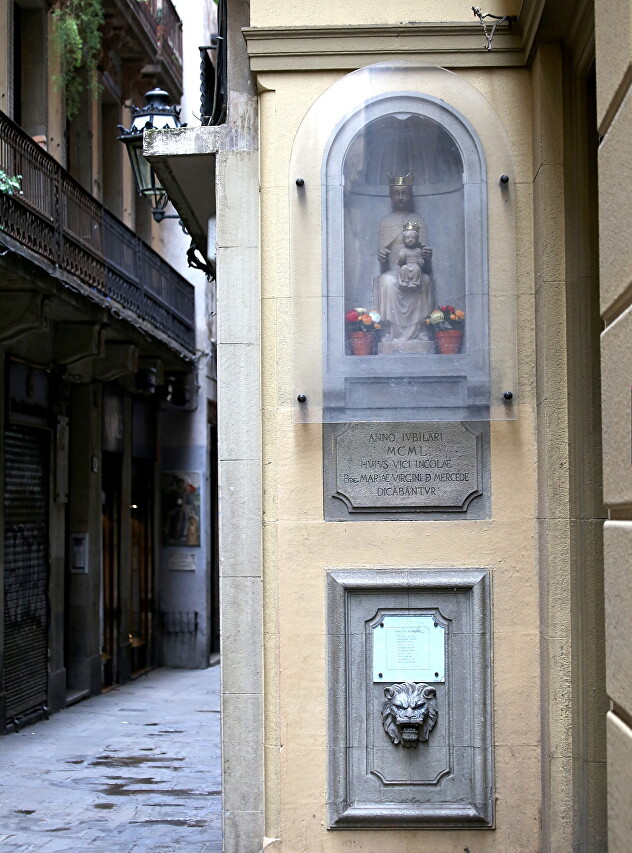Ceramic Panels of Calle Petritxol
A block away from La Rambla, a very small pedestrian street, Calle Petritxol, leads from Portaferrisa Street towards Pi Square. It has a length of 129 meters and a width of just over three meters. The street itself is about 500 years old, named after the owner of the house on Portaferrisa, which in the 15th century was divided into two parts, in order to open the passage to the church of Santa Maria del Pi. According to locals, this is one of the most charming streets in the old town.
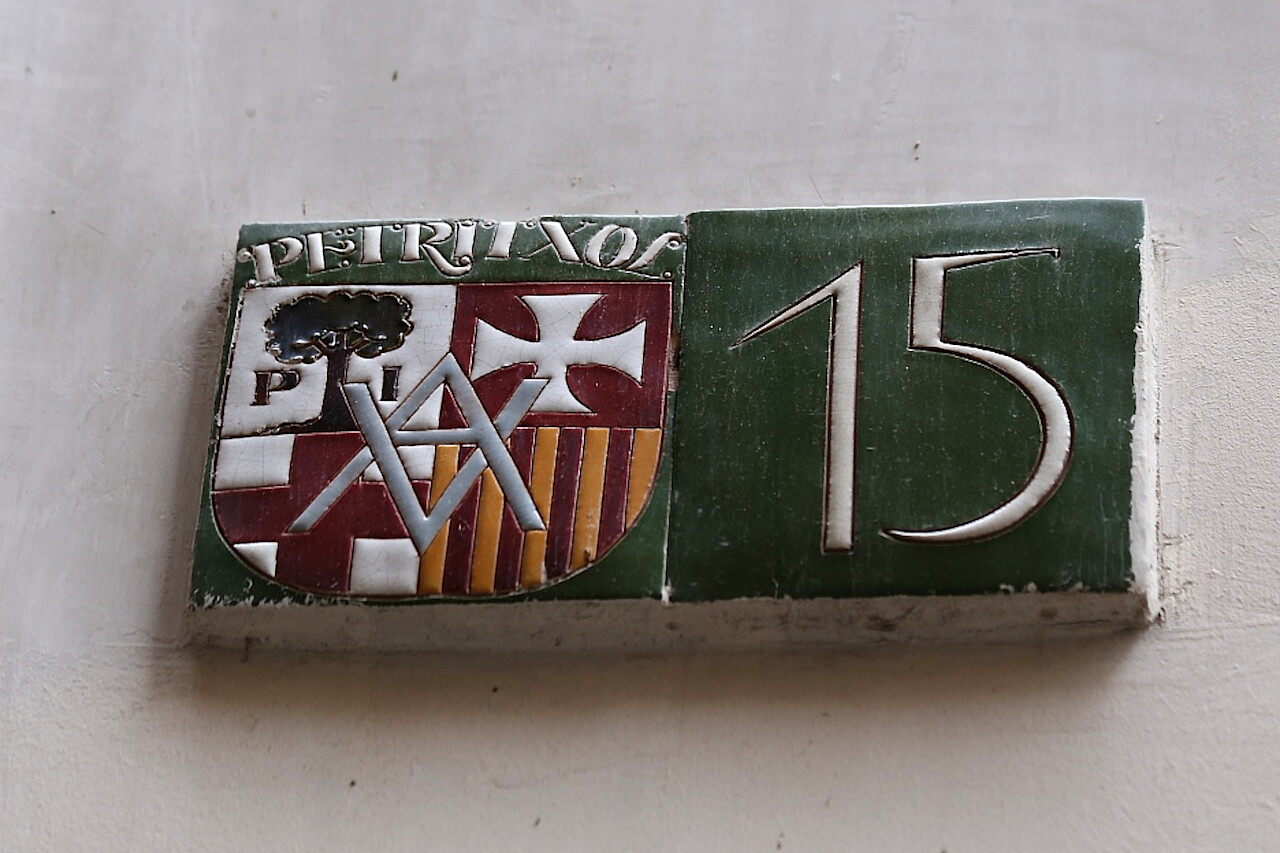
The shops and cafes located here have a rich history, including famous chocolate cafes. But most interesting of all are the many cute and funny ceramic wall panels that tell the story of the street and its inhabitants. This tradition began in the 17th century, but new tablets continue to appear in our time.
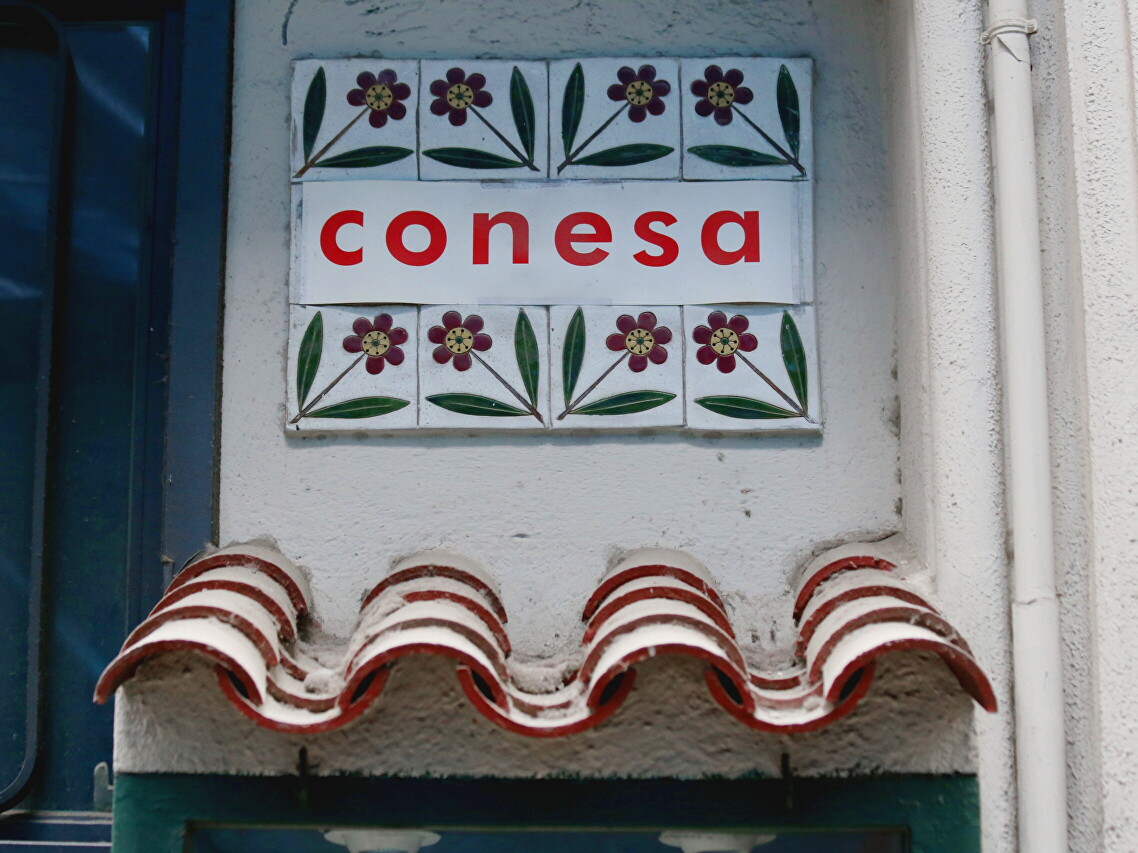
Signboard of the bookstore opened in 1921 by Lluis Milla i Reig. The store specialized in selling books about theater and choreography, which is not surprising, since many famous actors and theater figures lived on the street.
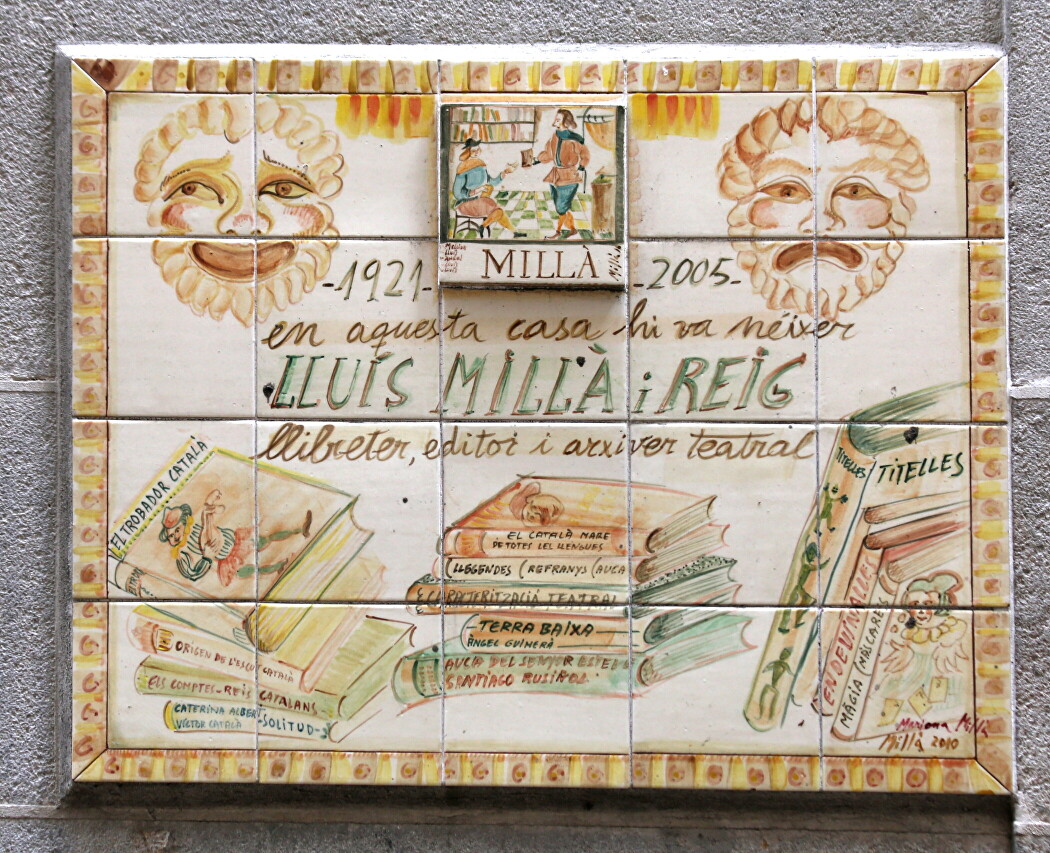
Some ceramic paintings illustrate the life of the street: Enjoy the sun on Petritschel Street, which sounds very ironic. The street is narrow and the houses are tall, and the sun comes in here at rare hours.
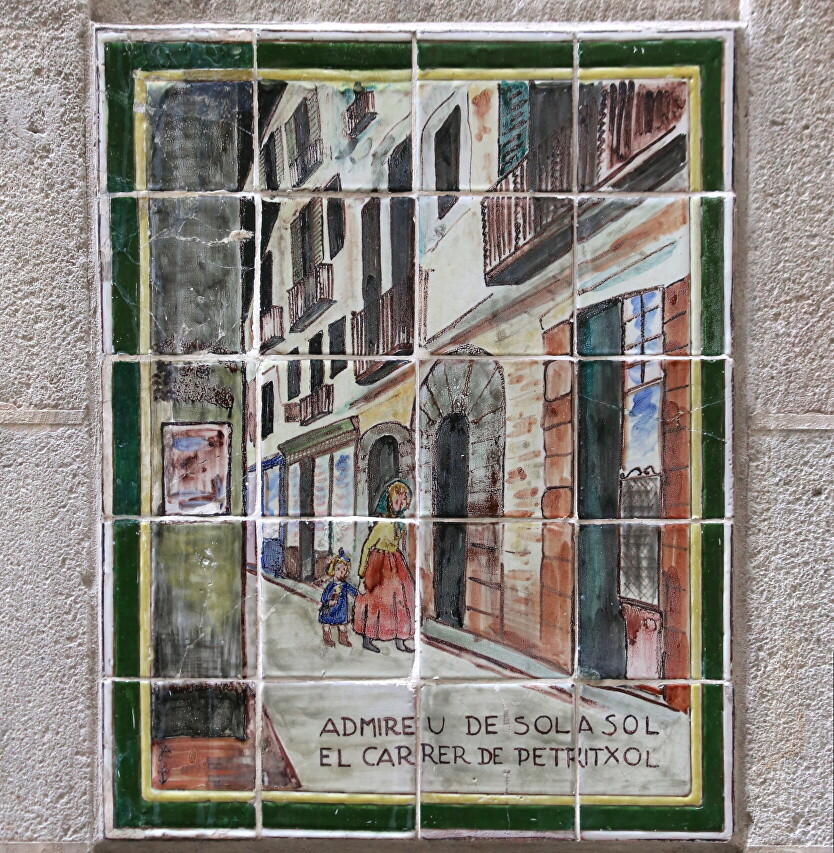
This scene depicts a milkman milking a goat in the presence of a customer. The caption reads: Herds of goats don't just soil the cobblestones.
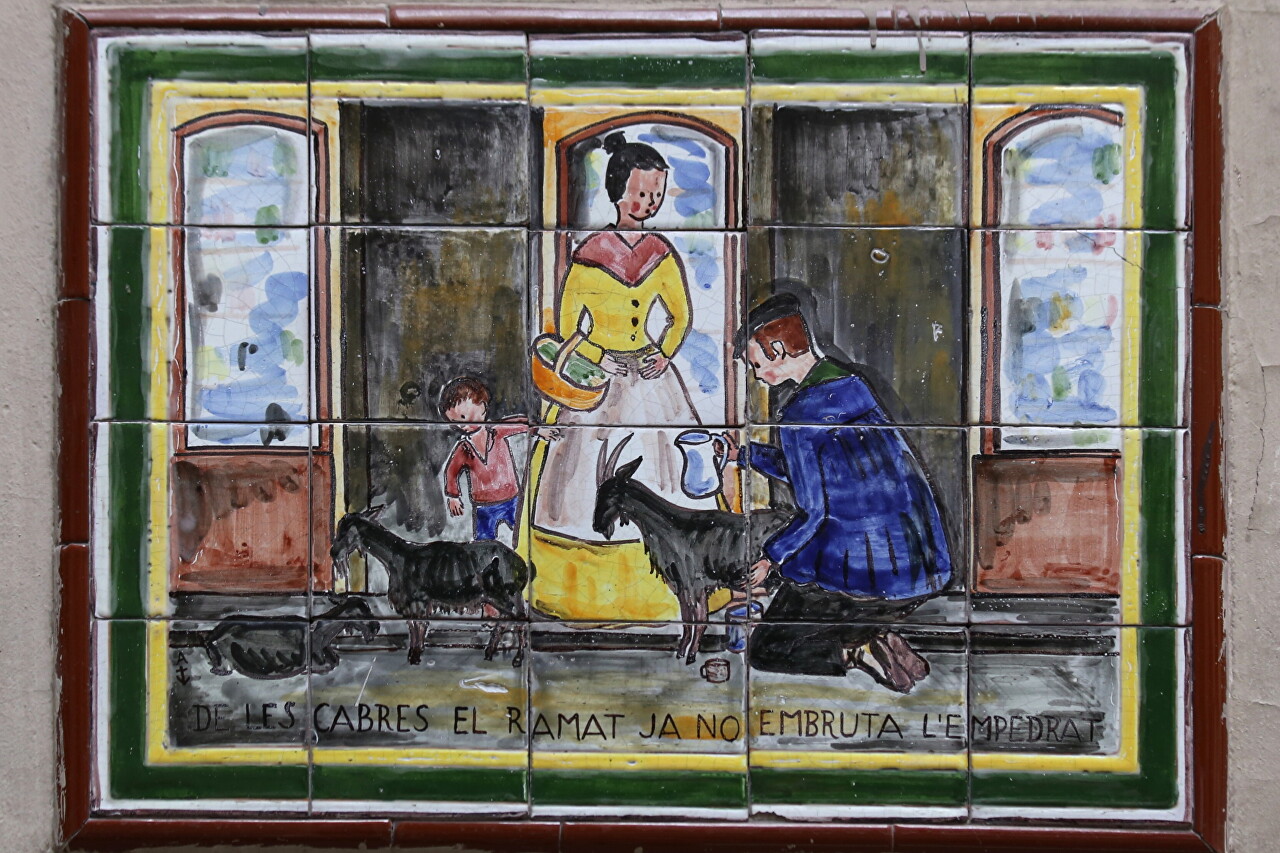
This sign encourages children to behave decently and politely on the street.
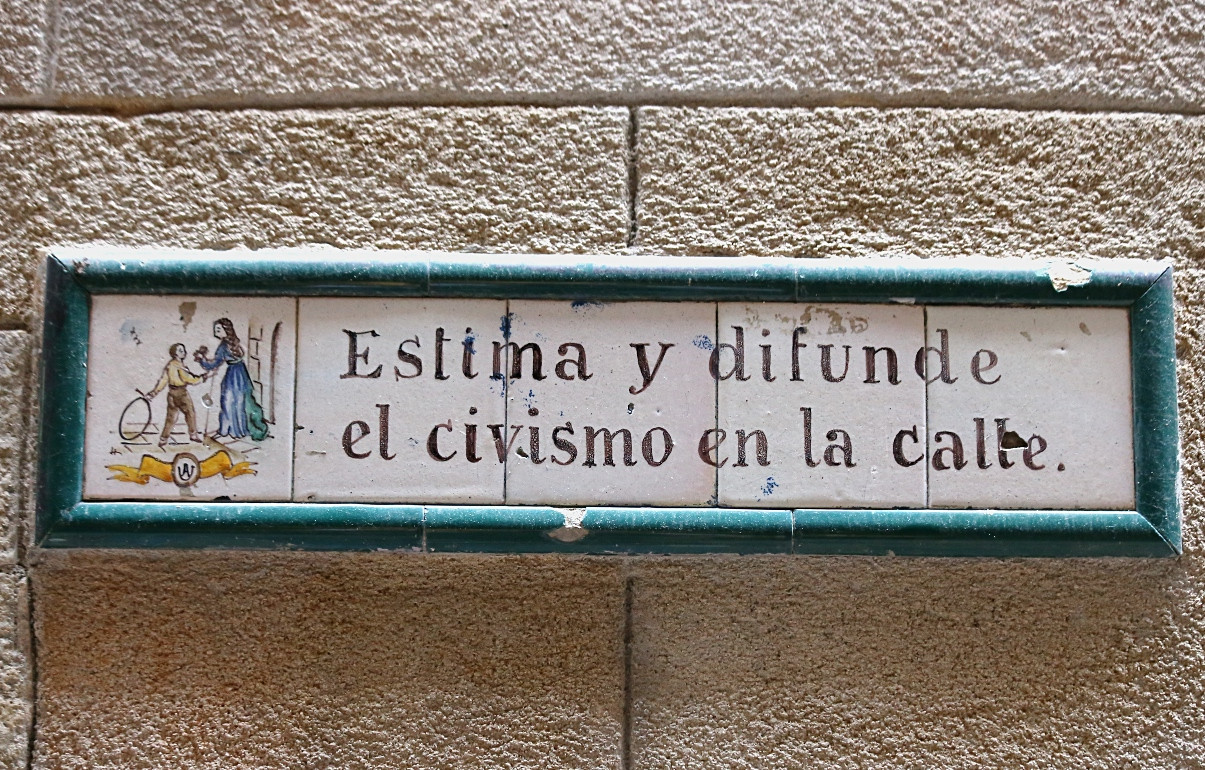
I translated it something like this: The golden wall of Pi cleanses the light - perhaps this has a deep philosophical meaning, or maybe it just says that the gilded or golden plaster of the church reflects light into a narrow dark street. Now there is no gilding or plaster on the facade of the church of Santa Maria del Pi.
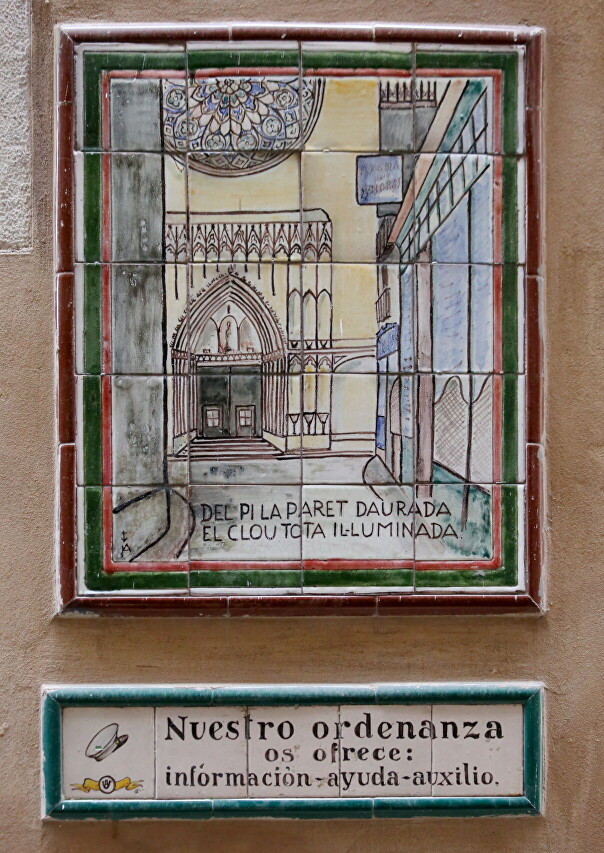
Touching picture: He does not feel blindness when holding the violin.
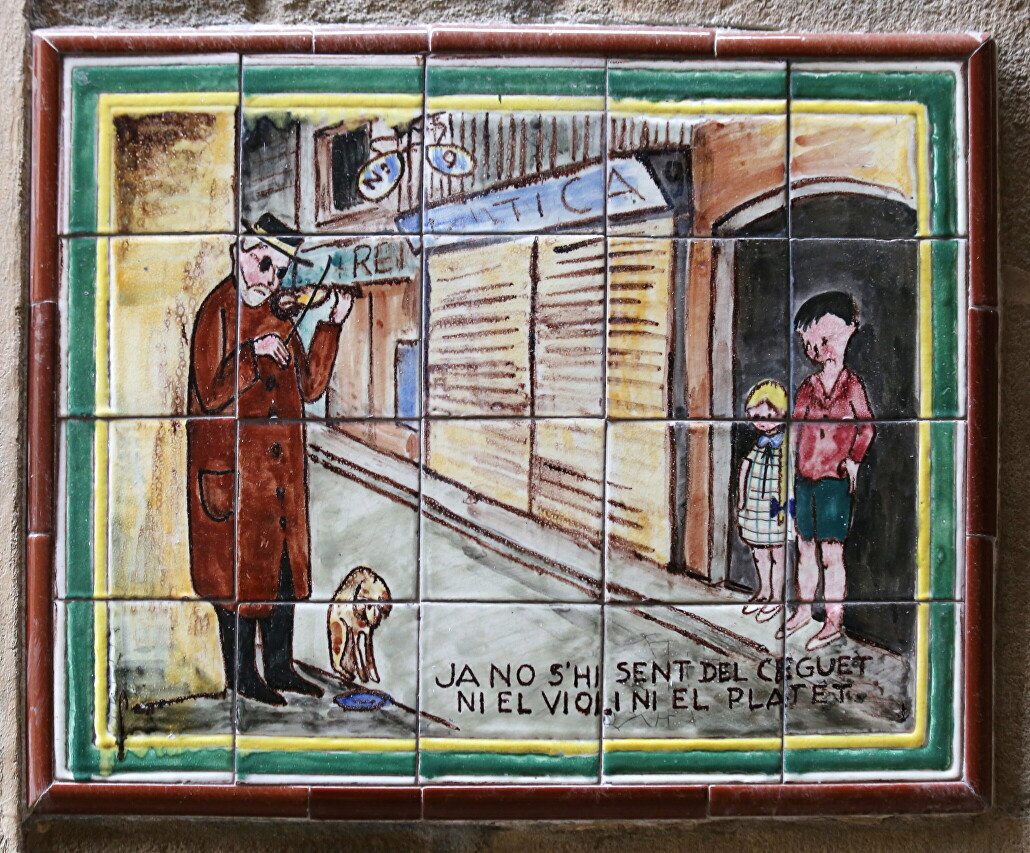
In a raincoat and hat every night lamplighter Pieus. The name Pieus most likely means that the lamplighter served the area of Pi Square.
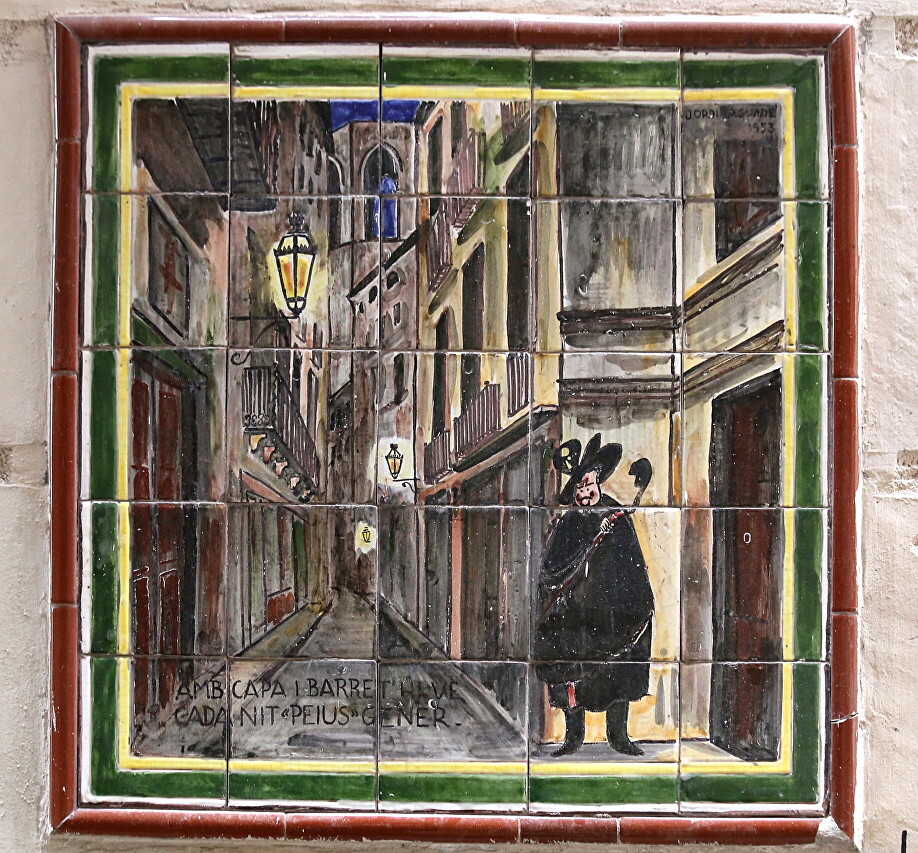
These panels are a collection of miniatures depicting scenes from urban life.
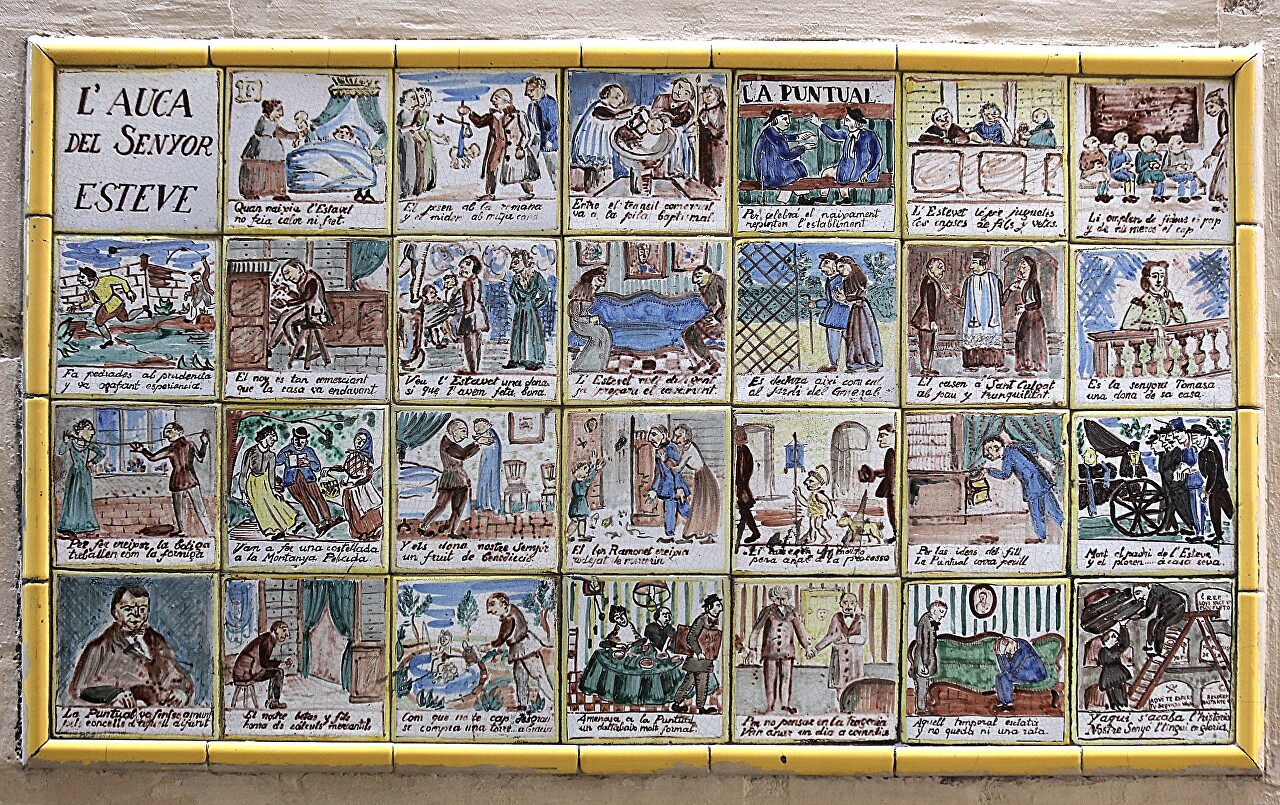
Some of the panels have a philosophical meaning: The Godmother says that time is passing. That is, life is not infinite, don't waste your time.
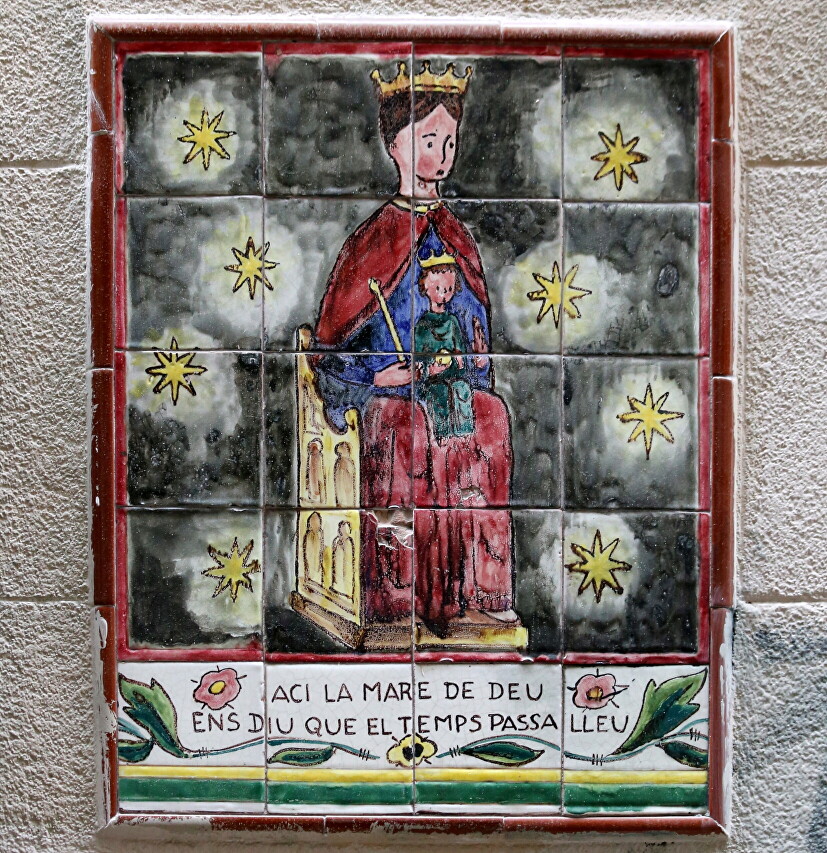
Some of the ceramic paintings are associated with traffic, this sign informs that there is one-way traffic and the entrance from Portaferrisa Street.
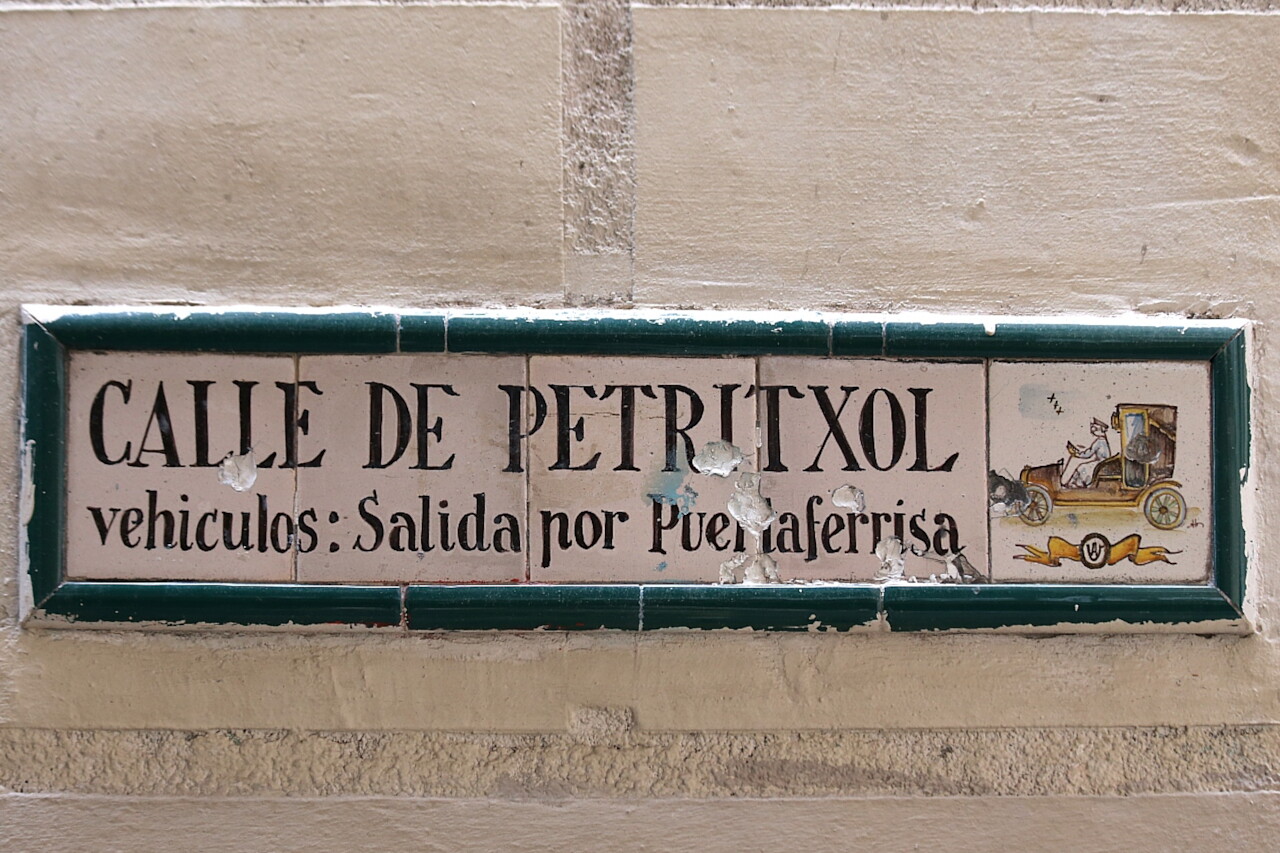
This phrase translates to Transport: moderate speed and short stops.
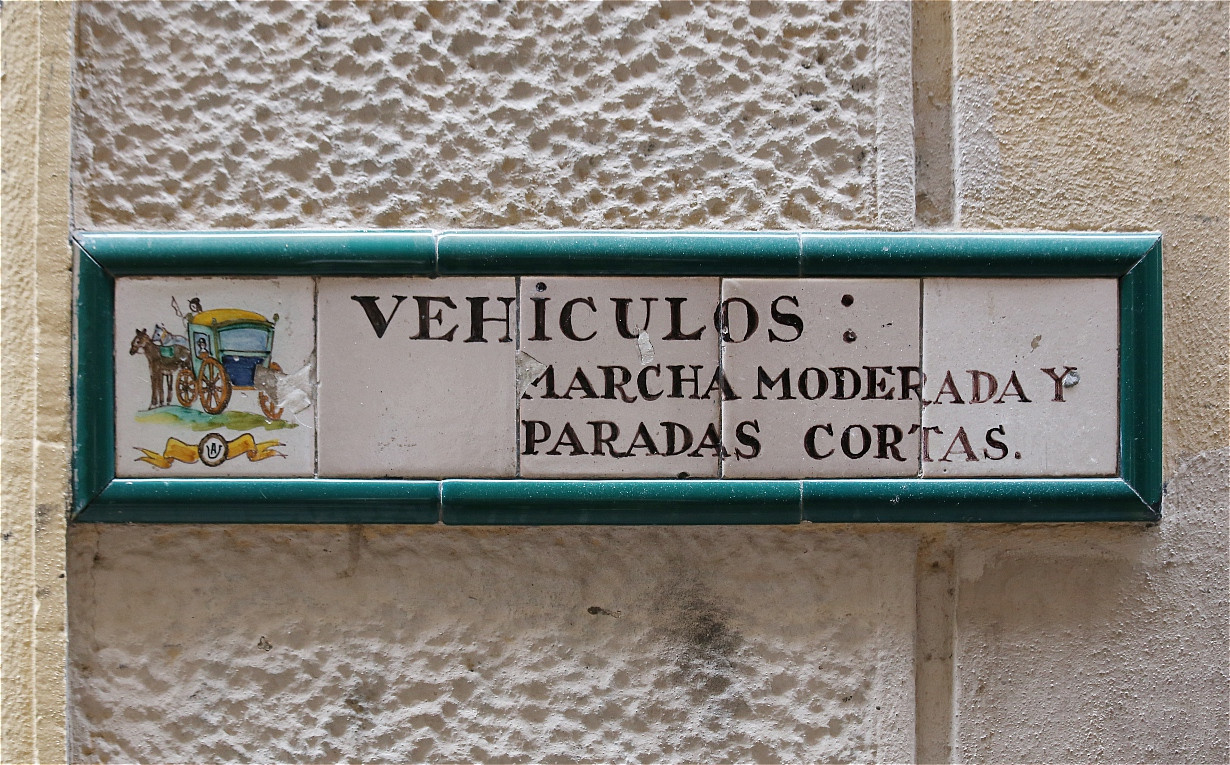
Many panels tell about famous people who lived on the street. Francisc Salvá y Camrillo (1751-1828), an outstanding Catalan scientist of the late Enlightenment, was born and died in this house. He was engaged in practical medicine, physics and meteorology, in particular, in 1791 he created one of the first really working electric telegraph devices.
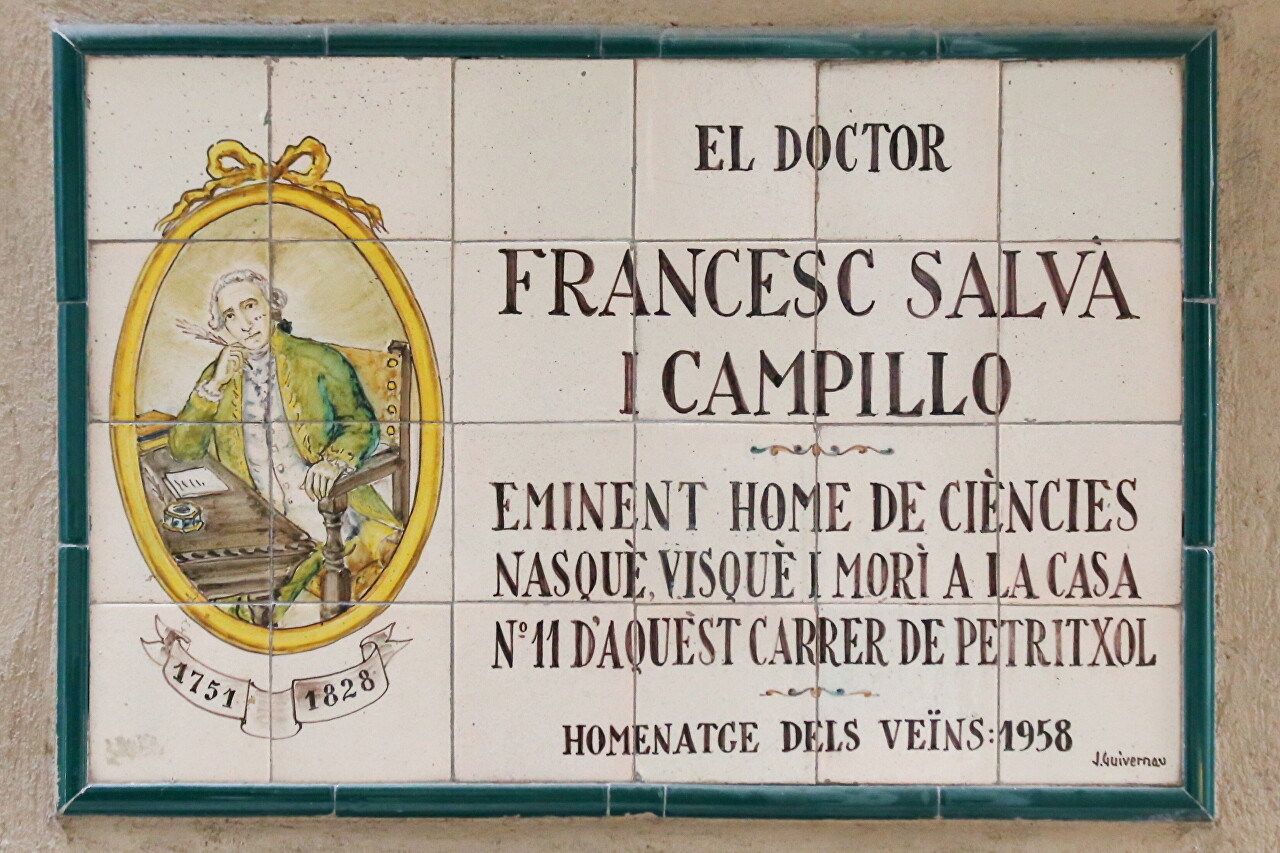
A memorial plaque informs that Joan-Anton Maragall i Noble (1902-1993), a Catalan politician and art dealer, also served as president of the Sagrada Familia Construction Council, lived in this house. His personal collection of historical documents is kept in the National Archives of Catalonia. The panel below mocks the fantastic disheveled beard of the artist Rusiñol (Santiago Rusiñol i Prats, 1861-1931). He is also known as a poet, journalist and playwright, one of the founders of the Catalan Modernism movement.
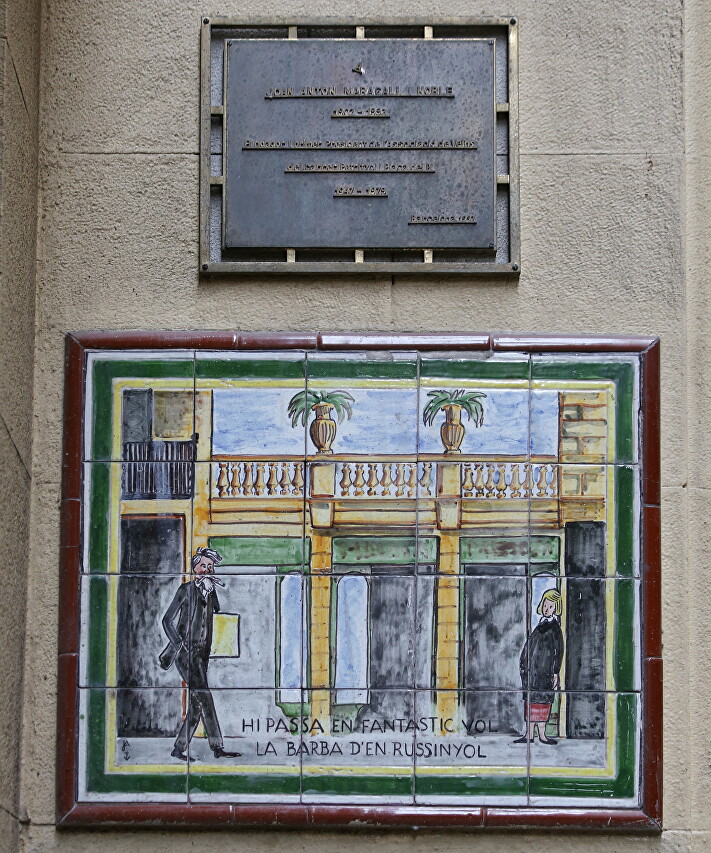
The next panel depicts, apparently, an exhibition of works by this artist. According to the inscription And there is no longer a cover in which people were dressed , you can guess that many paintings depict nudity.
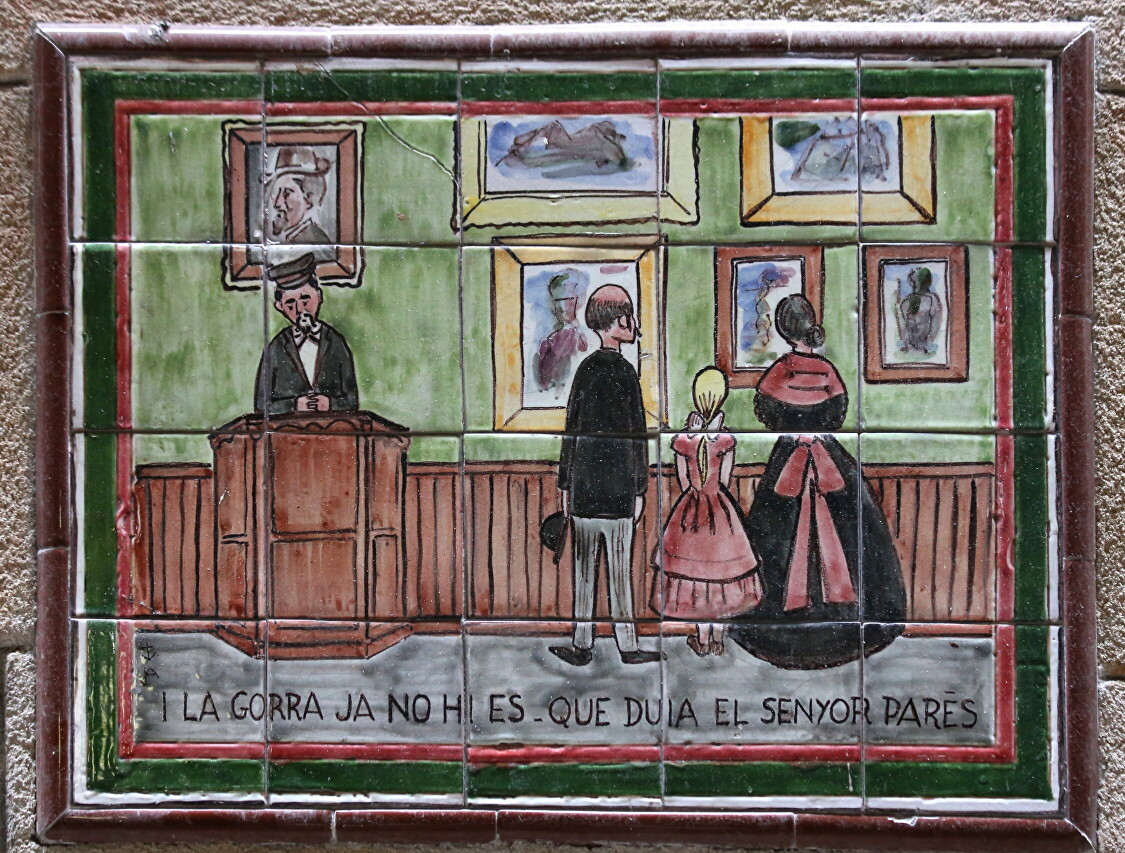
Moratin lived in this house, but we don't know on what floor. Leandro Fernández de Moratín (1760-1828), a well-known Spanish poet and playwright, whose name is given to one of the theaters in Barcelona.
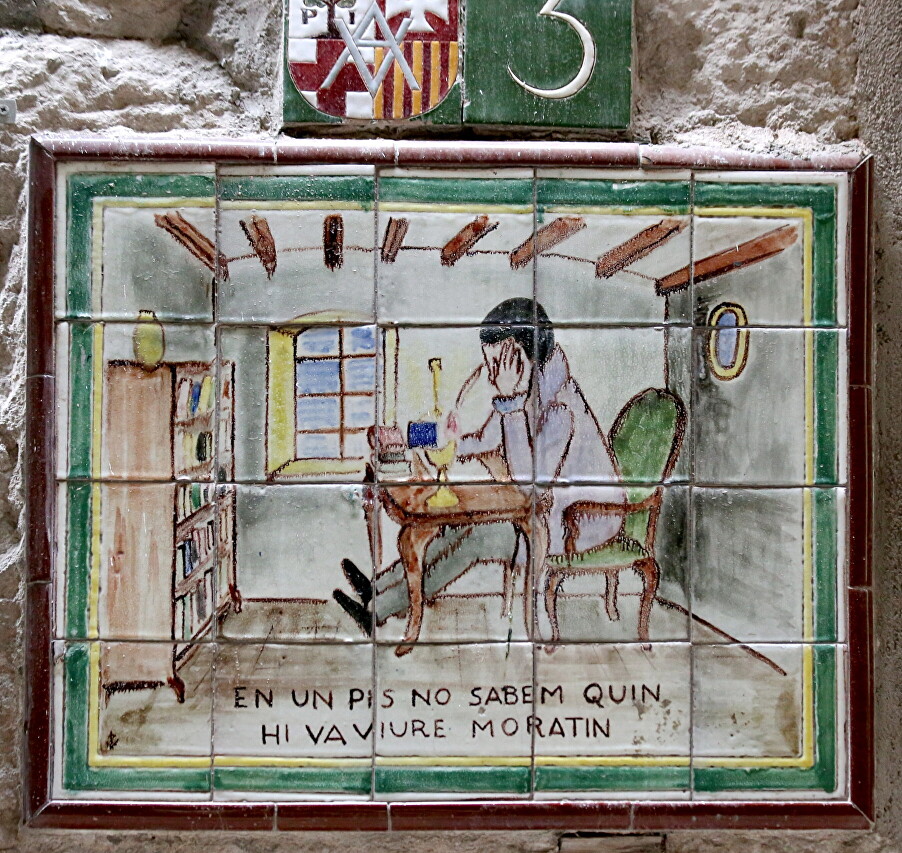
Here lived Joan Magriñà i Sanromà (1903-1995), a Catalan dancer and choreographer, who worked at the Liceu Theater, located on La Rambla. In 1936, he founded his own choreographic school, where many famous dancers graduated. The lower panel shows that Angel Guimera i Jorge (1845-1924), a Spanish poet, writer, and playwright who wrote in Catalan, is standing on the balcony. A distinctive feature of his work is the introduction of the main features of realism into Romanticism, which made him one of the companions of the revival of the Catalan language at the end of the XIX century (Renaixença).
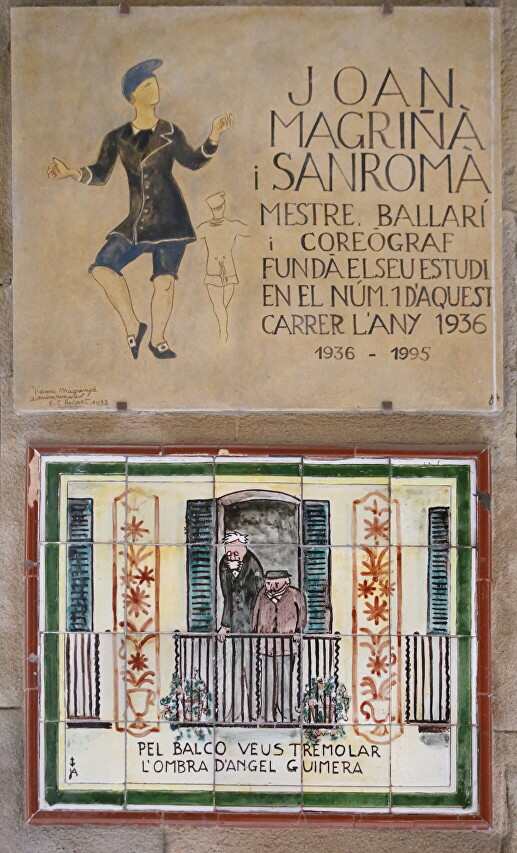
This house was the home of lawyer and poet Ramon Bech i Taberner (1918-1995), winner of the 1960 Carles Riba Prize.
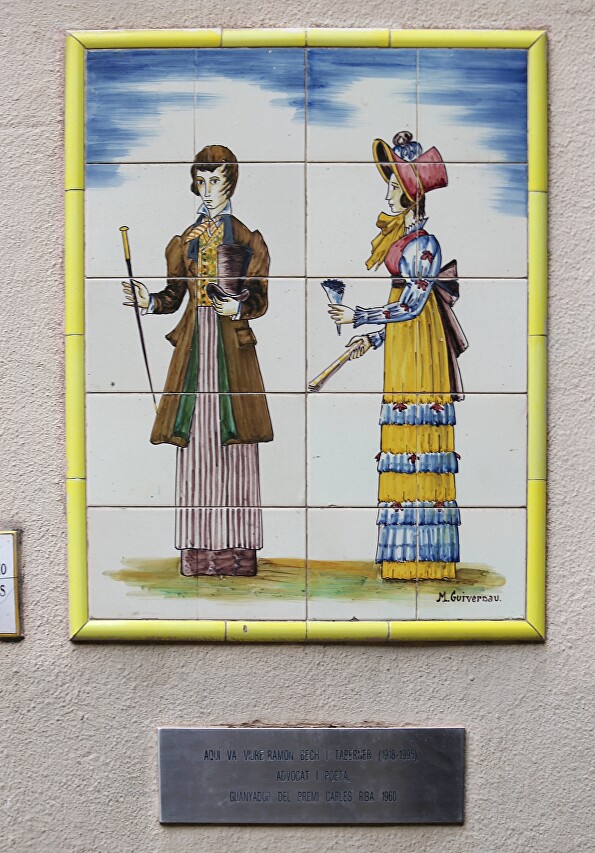
There are also religious sites on the street. Bas-relief depicting Saint James. The inscription at the bottom reads "Respect plants and animals". Judging by the style, this is the work of a modern master.
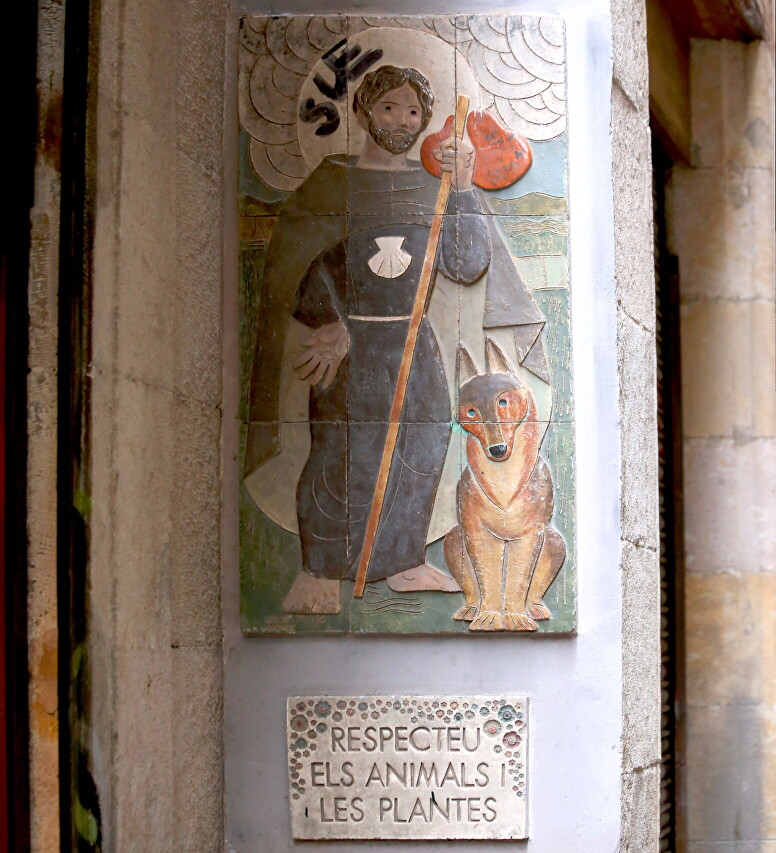
Street altar with the image of Maria Merced, patroness of the street. Under it is a donation box in the form of a lion's head, and you need to drop money into its mouth. At the same time, you should read the prayer that is printed on the sign above the lion's face.
